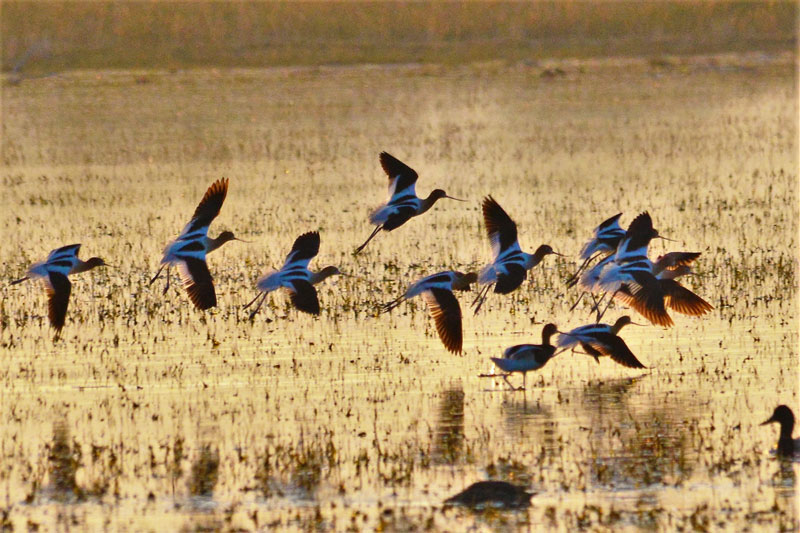SCHIESS: The search for avocets nesting in local marshes
Published at | Updated at
While the female American Avocet was faking an injury, the male was flying around my head trying to draw me from the shoreline of a pond near Roberts. Soon both took to the air reminding me of the Japanese attack at Pearl Harbor during World War II.
They finally landed gracefully on the breeze riffled water and I noticed a cotton ball image of a newly hatched chick paddling out to the parents. Two more with their miniature upturned bills joined the trio working their way to an island in the pond. As I moved to the edge of the water, both parents attack again, sounding off in their toughest avocet voices that were not tough at all.
Once the chicks made it to the island, I was no longer a worry for the parents and they went about gathering nymphs and worms for the chicks to eat. When a Black-crowned night heron showed up, the parents went into full blown attack and soon sent the omnivore looking for other prey.

Avocets generally lay from three to four eggs in a grass lined depression in sand or a mud flats where both the male and female incubate the eggs and care for the offspring. The chicks are precocial, meaning they can swim and run almost immediately after hatching, but it takes them a month before they can fly.
These beautiful birds will nest in large colonies, but this pair and most that nest in southeastern Idaho nest in pairs or small scattered groups. In the early spring large flocks migrate through the large area marshes and flooded fields but only a few pair will nest at Market Lake, Mud Lake and Camas National Wildlife Refuge.

Their spring plumage are mostly black and white with a rusty-red head and neck with the color turning a grayish white during the winter. The young will not get the reddish head and neck until they are a year old. Their black bill is upturned with the male’s bill less curved than the females. The bill is used to stir up the underwater vegetation making the water bugs, snails and worms available for the bird’s preferred food. They will also feed on seeds and some aquatic plants.
Most of the avocets winter in California and Texas moving north to Canada and Minnesota to nest.

When approached while migrating, they will either run or fly away but when protecting chicks, they become very aggressive. Some of my favorite photos of them are when they are migrating in groups and perform aerodynamic patterns in the early morning light.
Many of the trails through marshlands that have been closed at Mud Lake, Market Lake and Camas NWR will open on July 15 as most nesting will been done. Slow hikes along the dikes will reveal families of birds growing up and you may even be subject to an aerial assault.



Living the Wild Life is brought to you by The Healing Sanctuary.


